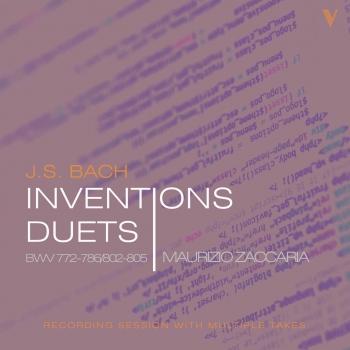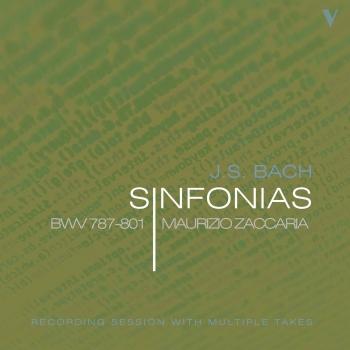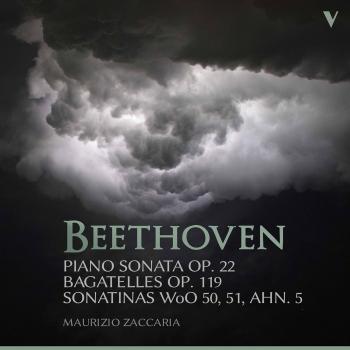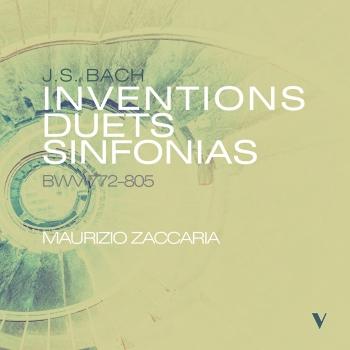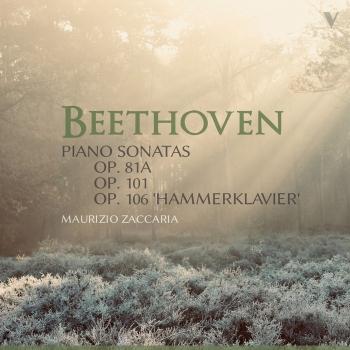
Beethoven: Piano Sonatas, Opp. 53, 54 & 57 Maurizio Zaccaria
Album info
Album-Release:
2020
HRA-Release:
08.05.2020
Label: OnClassical
Genre: Classical
Subgenre: Instrumental
Artist: Maurizio Zaccaria
Composer: Ludwig Von Beethoven
Album including Album cover
- Ludwig van Beethoven (1770 - 1827): Piano Sonata No. 21 in C Major, Op. 53 "Waldstein":
- 1 Piano Sonata No. 21 in C Major, Op. 53 "Waldstein": I. Allegro con brio 11:31
- 2 Piano Sonata No. 21 in C Major, Op. 53 "Waldstein": II. Introduzione. Adagio molto 04:08
- 3 Piano Sonata No. 21 in C Major, Op. 53 "Waldstein": III. Rondo. Allegretto moderato 10:40
- Piano Sonata No. 22 in F Major, Op. 54:
- 4 Piano Sonata No. 22 in F Major, Op. 54: I. In tempo d'un minuetto 04:54
- 5 Piano Sonata No. 22 in F Major, Op. 54: II. Allegretto 05:38
- Piano Sonata No. 23 in F Minor, Op. 57 "Appassionata":
- 6 Piano Sonata No. 23 in F Minor, Op. 57 "Appassionata": I. Allegro assai 10:09
- 7 Piano Sonata No. 23 in F Minor, Op. 57 "Appassionata": II. Andante con moto 05:19
- 8 Piano Sonata No. 23 in F Minor, Op. 57 "Appassionata": III. Allegro ma non troppo 08:24
Info for Beethoven: Piano Sonatas, Opp. 53, 54 & 57
Completed in the summer of 1804, the Sonata in C Major, Op. 53 known as “Waldstein” (the work was dedicated to Count Ferdinand von Waldstein) represents an extraordinary step toward sheer virtuosity. Particularly in the third movement, Rondo, new technical advances are introduced, such as melodies played above a continuous trill within the right hand, extended passages of triplets in scalar and arpeggiated form, and octave glissandi in both hands. Explicitly long pedal markings show that Beethoven was implementing new advances in piano writing, with resonance purposely built to blur harmonies of tonic and dominant – an effect that must have been startling at the time.
The Andante Favori in F Major, WoO 57, written between 1803 and 1804, was originally intended to serve as the slow movement of the Waldstein Sonata. Legend has it that a friend of Beethoven’s commented about its excessive length. The composer apparently threw a fit about it, but eventually followed his friend’s advice and wrote a much shorter movement as an introduction to the sonata’s rondo – the Adagio with which we are all familiar. Karl Czerny commented that Beethoven frequently liked to play the Andante in his public performances, which gave it the nickname “Favori” (favored).
The Sonata Op. 54 was written contemporaneously, and perhaps not coincidentally in the same key as the Andante Favori, one of a handful of sonatas by the composer to be written in two movements, it is an incredibly original work, full of invention and verve. The first movement, a minuet, offers stark contrasts between an elegant opening section and rambunctious octave passages in forte and fortissimo. The second movement, in sonata form, is a perpetual motion. Mercurial and lighthearted, it ends the composition in an irresistible frenzy.
Composed between 1804 and 1806, the Sonata in F Minor, Op. 57 was posthumously nicknamed “Appassionata” – a title given by the publisher of a four-hand version of the work in 1838, a title which still remains today. At the time of its composition, it was one of Beethoven’s most impressive works for the piano, perhaps matched in difficulty only by the Sonata Op. 53. Its nickname perfectly portrays the highly charged emotional content of the sonata’s framework. Dramatic dynamic contrasts in the outer movements create a compelling narrative, ending in a tragic, virtuosic coda. The andante movement is a series of variants based on the exponential development of rhythmic figurations.
Maurizio Zaccaria (Massenet, J.: Complete Piano Music - AE16003 AEVEA; Gershwin, G.: (Complete) Published Piano Works - AE17032 AEVEA), begins his music journey exploring the Beethovenian universe with his integral Piano Sonatas (32 + 4) in a view that is something original, explosive and fully pianistic.
All the set was and was/will be recorded on two Steinway's grand D-274 by sound engineer and producer Alessandro Simonetto (OnClassical), in perfect stereo 88.2x24-bits, using historical microphones Bruel & Kjaer (4009, 4006).
Maurizio Zaccaria, piano
Maurizio Zaccaria
After a diploma in piano at "Niccola Piccinni" Conservatory of Music in Bari under the guidance of Gregorio Goffredo and a master at "Nino Rota" Conservatory of Music in Monopoli under the guidance of Benedetto Lupo, he attended the masterclasses of Marisa Somma, Cristian Zaccarias, Joaquin Achucarro, Francois J. Thiollier, Konstantin Bogino et Aldo Ciccolini.
He went on to win several national and international piano competitions: Rachmaninoff International Piano Competition, Liszt International Piano Competition (the famous Argentine pianist Martha Argerich was in the jury), Thalberg International Piano Competition, International Music Competition in Ibla, "San Nicolaus" International Piano Competition International, Piano Festival in Osnabruch (Germania), Cliburn Piano Competition in Texas (USA). In 2008 he was awarded the "Umanitaria" Society price in Milan (president Maestro Abbado); during the same year he was also awarded the Arts Price of the Italian Cultural Ministry, after which he played at the Parco della Musica in Rome. He plays in Italy and abroad in some important halls: Auditorium della Radio Televisione Svizzera (Lugano); Salle Cortot (Paris); Institut Italien de Culture (Paris); Sala Gaber (Milan); Parco della Musica (Rome); Sala Scarlatti (Naples); Teatro delle Muse (Ancona); Teatro Piccinni et Kursaal Santa Lucia (Bari); Teatro Bibiena (Mantova); Villa Ruffolo (Ravello); Teatro Wan Vesterhout (Mola di Bari); Auditorium V. Falco (playing two pianos with Aldo Ciccolini); Teatro Curci (Bari). Maurizio Zaccaria plays for important associations: Fondazione Petruzzelli (Bari); URTIcanti contemporary music festival; Ravello festival; PianoFestival (Grosseto); A.R.A.M. (Rome); Gaeta Festival; Accademia dei Cameristi (Bari). In March 2007 he debuted in the USA, during a series of concerts playing Bartok's compositions, among which his Sonata for two pianos and percussions. His last concerts with Bari Concert Society orchestra and Taranto Magna Grecia orchestra, respectively devoted to Shostakovic's Concerto Op. 35 and Rachmaninoff's Third Concerto Op. 30 have fascinated audience and critics. He played as a soloist with Petruzzelli Symphonic Orchestra, (Bari), "Nino Rota" orchestra (Monopoli, Bari) conducted by Filippo Maria Bressan, with Cosenza Symphonic orchestra, Bacau symphonic orchestra, Matera Duni Orchestra (there he played Gershwin's best symphonic pieces for piano, Concerto in Fa and Rapsody in Blue) and with Bari Metropolitan Symphonic orchestra. He was invited by the Italian embassy in Pogdorica where he played music by Fauré, Debussy and Schostakovic. He is also a composer, and he debuted some compositions by Goeffroy Drouin, Luca Lombardi, Lera Auerbach, Luca Mosca, Andrea Marena and Fabio Vacchi. He also pays chamber music and he collaborates with flutist Leonardo Grittani.
This album contains no booklet.
















